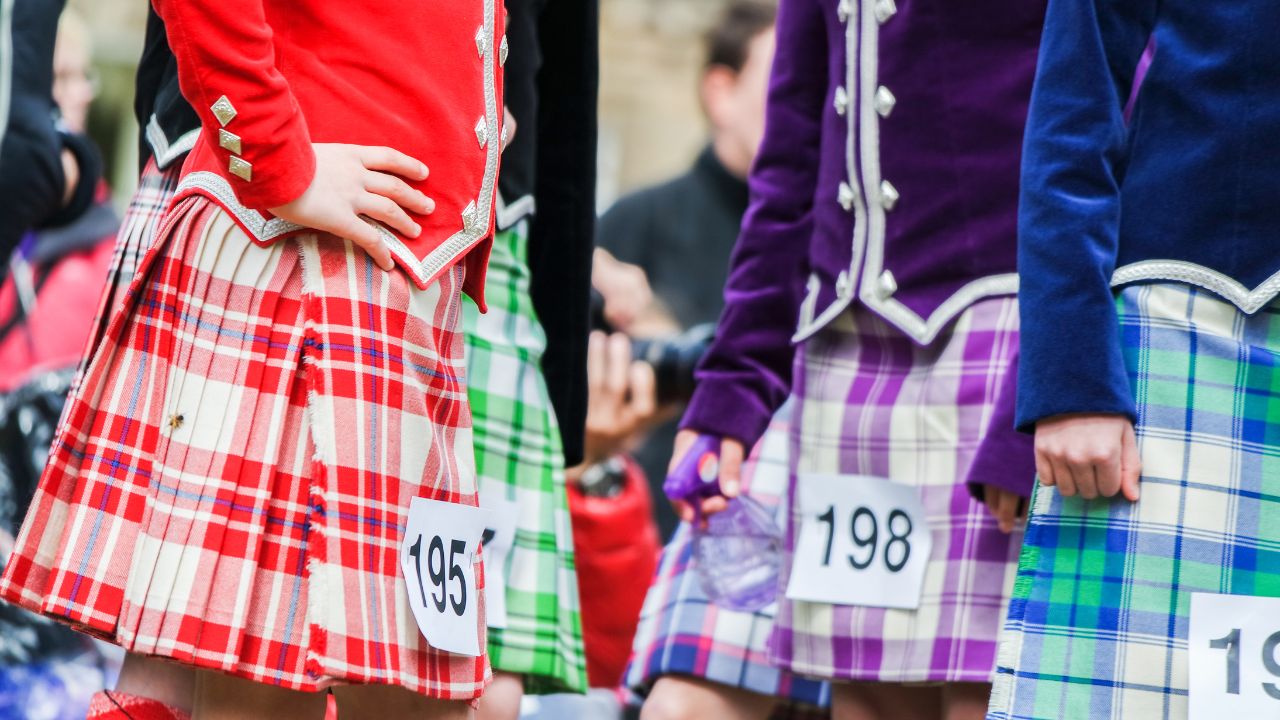In the world of Highland dancing, Championships represent the highest level of competition, attracting top dancers from across the country and beyond.
Governed by the Scottish Official Board of Highland Dancing (SOBHD) and recognized by the Federation of United States Teachers and Adjudicators (FUSTA), these events have strict rules, set dances, and unique eligibility requirements.
Whether you’re a dancer aiming to qualify or a parent planning a competition season, understanding the Championship system is essential.
What Makes a Championship Different from a Regular Competition?
SOBHD Approval
- All Championships must be officially approved by the SOBHD.
- Organizers submit applications well in advance, ensuring the event meets all rules and standards.
Multiple Judges
- Championships are judged by three independent judges.
- Scores are combined and averaged for fairness.
Set Steps
- Each year, the SOBHD Technical Committee sets the specific steps for Championship dances.
- Dancers must perform these exact steps — no variations allowed.
Who Can Compete in a Championship?
Premier Category Only
- Only dancers in the Premier category are eligible.
- Premier status means you have advanced beyond Primary, Beginner, Novice, and Intermediate through competition achievements.
Age Groups
- Championships are divided into specific age categories to ensure fairness.
Types of Championships
1. Closed Championships
- Entry is limited to dancers who meet specific residency or birthplace requirements.
- Often used for Regional Championships, where only dancers from certain states or regions may enter.
2. Open Championships
- Open to any eligible Premier dancer, regardless of residence or birthplace.
- Popular for attracting top talent from multiple regions or countries.
Closed vs. Open Championships
| Feature | Closed Championship | Open Championship |
|---|---|---|
| Entry Eligibility | Residency or birthplace requirements | No residency restrictions |
| Competitor Pool | Regional/local dancers only | Dancers from any region/country |
| Prestige Level | High within the region | High nationally/internationally |
| Purpose | Select local champions | Showcase top dancers from anywhere |
Verifying a Championship
Why It Matters
Not all competitions calling themselves “Championships” are officially recognized.
- Only SOBHD-approved Championships count toward official Championship results and rankings.
How to Verify
- Check the SOBHD or FUSTA official calendars.
- Confirm with your teacher before registering.
Preparing for a Championship
Technical Mastery
- Study the annual set steps as soon as they are released.
- Practice consistently to meet technical precision standards.
Performance Readiness
- Build stamina to handle the number of dances required.
- Develop stage presence, as Championship judging emphasizes overall performance.
Competition Experience
- Enter smaller competitions first to gain experience under pressure.
The Role of Regional Championships
United States Inter-Regional Championships (USIR)
- Rotates annually among the six FUSTA regions (East, Midwest, Northwest, Southeast, Southwest, and West).
- Requires qualifying through Regional Championships in your home area.
Travel Considerations for Championships
- Costs: Budget for entry fees, travel, hotel stays, and costumes.
- Timing: Some dancers travel internationally to attend top Championships.
- Support: Traveling as part of a dance school can help reduce costs and offer moral support.
Benefits of Competing in Championships
- Prestige: Winning or placing in a Championship can boost your dance reputation.
- Networking: Meet dancers and teachers from other regions and countries.
- Motivation: Competing against the best pushes you to improve your skills.
Common Myths About Championships
Myth 1: Only elite dancers can enter.
- Truth: Any Premier dancer can compete, but preparation is key.
Myth 2: Championships are just bigger competitions.
- Truth: They have unique rules, steps, and judging requirements that set them apart.
Myth 3: Closed Championships are less competitive.
- Truth: Many regions have extremely high-level dancers.
Highland dancing Championships are the pinnacle of competitive achievement, requiring dedication, technical mastery, and an understanding of specific rules and formats.
By knowing the difference between Closed and Open Championships, verifying SOBHD approval, and preparing thoroughly, dancers can enter the stage with confidence.
Whether your goal is to qualify for the United States Inter-Regional Championships or to test yourself against top talent worldwide, Championships offer an unparalleled opportunity to showcase your skill and passion.
FAQs
Can Intermediate dancers enter a Championship?
No. Only Premier dancers are eligible to compete in Championships.
How do I find the set steps for the year?
Your teacher will have the official SOBHD list, usually released before the competition season.
Do Championship results affect my competitive status?
No — they do not change your category, but they can impact your ranking in the competitive community.
